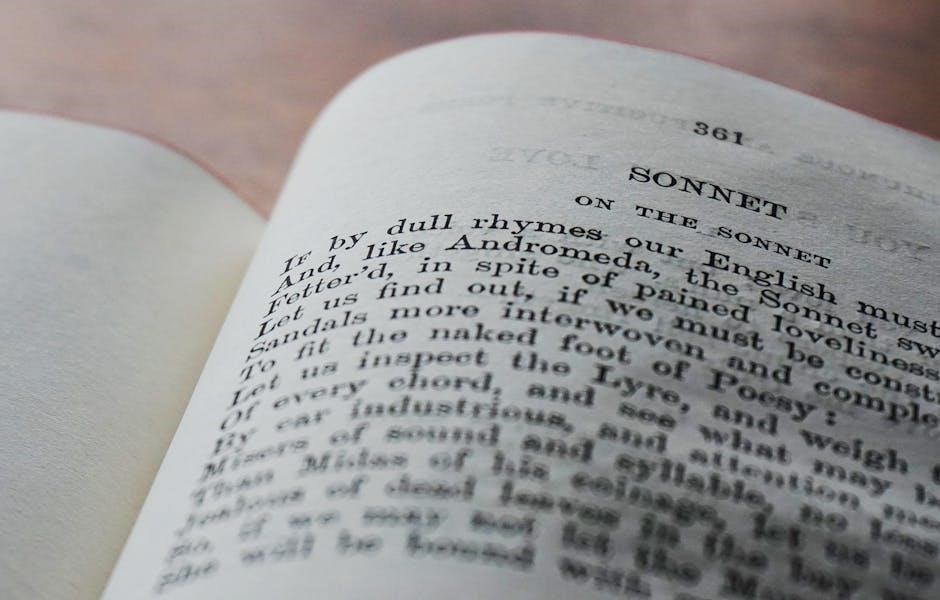Kubla Khan is a renowned poetic fragment by Samuel Taylor Coleridge, inspired by a vivid dream. Composed in 1797 and published in 1816, it is celebrated for its surreal imagery and exploration of creativity, making it a cornerstone of Romantic literature.

Historical Background
Kubla Khan, composed by Samuel Taylor Coleridge in 1797, was inspired by an opium-induced dream. The poem reflects Coleridge’s fascination with the exotic and the subconscious, drawing imagery from historical accounts of Kublai Khan’s empire. The Khan’s summer palace, Xanadu, became the centerpiece of Coleridge’s vision. The poem was not published until 1816, nearly two decades after its creation, and was subtitled “A Vision in a Dream: A Fragment,” acknowledging its incomplete nature. Coleridge claimed that a mysterious interruption during his writing process caused him to forget parts of the vision, leaving the poem fragmented. The historical context of Kublai Khan’s reign and the mystique of Xanadu provided a rich backdrop for Coleridge’s exploration of creativity and imagination. The poem’s publication coincided with the rise of Romanticism, making it a defining work of the movement. Its blend of history, fantasy, and personal experience continues to captivate readers and scholars alike.

Composition

Kubla Khan was composed in 1797 after an opium-induced dream, with Coleridge capturing the vision before an interruption caused him to forget parts of it. The poem’s fragmented structure reflects its origins, blending vivid imagery and symbolism to create a surreal landscape.

The Dream
The composition of Kubla Khan is deeply tied to a vivid dream Samuel Taylor Coleridge experienced after reading about Kubla Khan. In his preface, Coleridge explained that the poem came to him in an opium-induced vision, where he saw the majestic landscape of Xanadu and the pleasure dome. Upon waking, he immediately began writing, capturing the imagery and rhythms of the dream. However, an unexpected visitor interrupted him, and upon returning, he found that the rest of the vision had faded from his memory. This interruption left the poem fragmented, as Coleridge could only recall portions of the dream. Despite its incomplete nature, the poem retains the surreal and vivid quality of the dream, with imagery such as the “stately pleasure-dome” and the “sacred river Alph” flowing through “caverns measureless to man.” The dream’s influence is central to the poem’s essence, blending fantasy and reality in a way that has captivated readers for centuries. The fragmented composition reflects the fleeting nature of the dream itself, leaving behind a haunting and enigmatic work of Romantic literature.

Themes and Imagery
Kubla Khan explores themes of creation and decay, blending vivid natural imagery with architectural grandeur. The pleasure dome, sacred river Alph, and sunless sea evoke a surreal landscape, symbolizing the infinite and the fleeting nature of human endeavor.
The Pleasure Dome
The pleasure dome in Kubla Khan is a central and evocative image, symbolizing opulence and beauty. It is described as “stately” and decreed by Kubla Khan, surrounded by fertile ground, walls, and towers. The dome represents a harmonious blend of nature and human creation, with gardens bright with sinuous rills and incense-bearing trees.
The pleasure dome also embodies a duality, contrasting the serene and ordered structure with the chaotic and mysterious natural world. The river Alph, which flows through caverns measureless to man and into a sunless sea, underscores the dome’s ethereal and otherworldly essence. This juxtaposition highlights the tension between human ambition and the ineffable power of nature.
The imagery of the pleasure dome has been interpreted as a metaphor for the poet’s vision of creativity and imagination. It symbolizes a space where the finite and infinite coexist, where the boundaries of reality are transcended. The dome’s beauty and grandeur, however, are tempered by the poem’s fragmented nature, leaving it as an incomplete yet enduring symbol of wonder.
For further reading, the PDF versions of Kubla Khan provide detailed analyses of these themes and imagery, offering insights into Coleridge’s visionary craftsmanship.
PDF Version
The PDF version of Kubla Khan offers a convenient way to read and analyze the poem. It includes the full text, subtitled A Vision in a Dream, and is available for free download from various academic sources.
Sources to Download
Several reliable sources offer free PDF downloads of Kubla Khan. Montclair University provides a downloadable version through their website, while Oxford University’s collections include the poem in both PDF and text formats. Additionally, platforms like Librivox offer free audio versions of the poem, complementing the written text. These sources ensure easy access to Coleridge’s iconic work, making it ideal for academic study or personal reading. They also include introductory notes and historical context, enhancing the reader’s understanding of the poem’s origins and significance.
How to Read the PDF
To read the PDF version of Kubla Khan, download the file from a reputable source like Montclair University’s website or Oxford University’s digital collections. Once downloaded, open the file using a PDF reader such as Adobe Acrobat or a web browser with PDF viewing capabilities. The poem is typically presented in its original form, with clear typography and pagination. Readers can navigate through the document using bookmarks or the “find” function to locate specific lines or themes. Many versions include introductory notes or historical context, which provide deeper insights into Coleridge’s inspiration and the poem’s significance. For an enhanced reading experience, adjust the zoom level or switch to full-screen mode. Additionally, some PDFs may include annotations or commentary, offering a more immersive understanding of the work. Ensure your device has a compatible PDF viewer installed to access and enjoy the poem seamlessly.

Literary Analysis

Kubla Khan is a poem that defies conventional structure, embracing its fragmented nature as a source of artistic depth. Coleridge’s masterpiece, born from an opium-induced dream, explores themes of creativity, memory, and the subconscious. The poem’s vivid imagery, such as the “stately pleasure-dome” and the “sacred river Alph,” creates a surreal landscape that blurs the line between reality and fantasy. Critics have noted the work’s unconventional use of language, with uneven end-stops and enjambments that mirror the chaotic yet beautiful flow of the dreamworld. The poem’s central theme of constructing a utopian space—Xanadu—reflects Coleridge’s fascination with power, beauty, and the transience of human achievement. Despite its incomplete form, Kubla Khan remains a profound meditation on the nature of art and inspiration, with its fragmented structure paradoxically enhancing its mystique. Scholars often interpret it as a metaphor for the elusiveness of creative perfection, making it one of the most analyzed and celebrated works in Romantic literature.

Kubla Khan stands as a testament to Samuel Taylor Coleridge’s innovative spirit and the timeless allure of Romantic poetry. Its dreamlike imagery and fragmented form have captivated readers, inviting interpretations that explore the boundaries of creativity and memory; The poem’s central themes of beauty, power, and the fleeting nature of human creation resonate deeply, offering a universal appeal. Despite its unfinished state, Kubla Khan remains a cornerstone of literary study, celebrated for its vivid language and philosophical depth. Its ability to evoke a sense of wonder and mystery ensures its enduring place in the canon of world literature, continuing to inspire new generations of readers and scholars alike.
